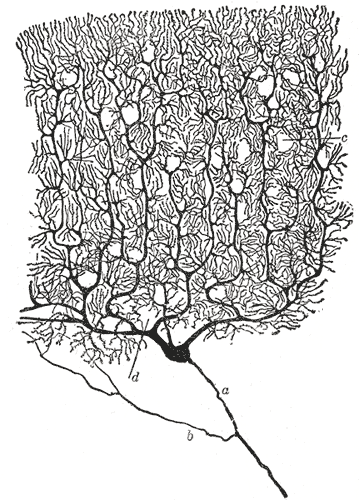Week 7- Neuroscience and Art
Week 7- Neuroscience and Art
 |
| This colorful depictions of axons and neurons shows a true mix of science and art |
For me, this topic is extra fascinating, as I intend for my minor to be in neuroscience. It is clear that this idea has a very close relation with art, as the mind is the feature in our body responsible for creativity and imagination. There will always be people who try to figure out just how the brain works in order to progress as a species. One of these people is Joseph Gall who is the found of phrenology, or what is essentially brain mapping. By trying to determine certain characteristics of the brain from the outside, he was attempting to be able to make predictions about people's behaviors or personalities. While we now know this isn't possible, it paves the way for future work of neuroscientists, including Remona Khall and her brain mapping.
To me, her work is really fascinating because we think of our genetics line as a branching out lineage,
 |
| Here, the neuron tree resembles that of a family tree |
The fact of the matter is, the brain is a complex thing that gathers inspiration from different stimuli, whether it be emotions, experiences, or anything else. One of the most effective ways of making a strong sensation for your brain is one that is not legal at this time, which is through the use of drugs. Some of the most famous artists in history have used things such as cocaine to fuel their ideals, or psychedelics like LSD. While there certainly should not be a suggestion made to do drugs, as the side effects are undeniable, there is no doubt that the brain truly thrives to create some amazing pieces and ideas when stimulated to that extent.
 |
| One of the many pieces of art that have been created while an artist is on psychedelic drugs. |
Sources:
Deutsch, David. "A New Way to Explain Explanation." David Deutsch: A New Way to Explain Explanation | TED Talk | TED.com. TedX, 2009. Web. 22 May 2017.
Landau, Elizabeth. "What the Brain Draws From: Art and Neuroscience." CNN. Cable News Network, 15 Sept. 2012. Web. 22 May 2017.
"Sponges: Nothing like SpongeBob." The Wonders of the Seas: Sponges. Ocean Research Group, 11 Mar. 2014. Web. 22 May 2017.
"Swann’s Hypothesis." The New York Times. The New York Times, 03 Nov. 2007. Web. 22 May 2017.
Wighton, Kate. "This Is Your Brain on LSD." Neuroscience News. Imperial College London, 12 Apr. 2016. Web. 22 May 2017.



Comments
Post a Comment